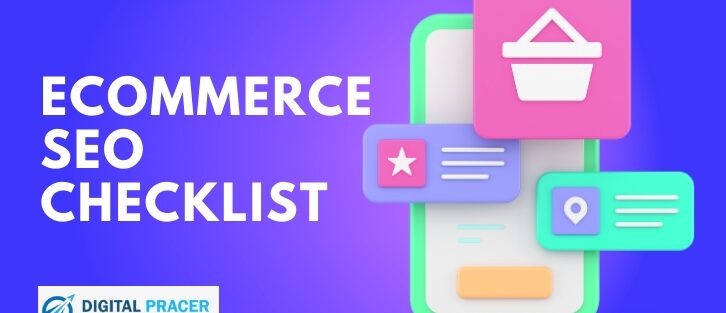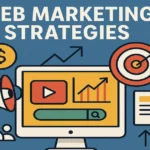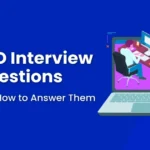Why You Need a Killer SEO Strategy for Your eCommerce Store
Let’s be real—eCommerce is a battlefield. The competition is everywhere. And if you’re not showing up on Google, you’re basically invisible. Over the years, I’ve tested, tuned, and transformed countless eCom stores’ SEO campaigns, so I boiled my personal system down into 30 simple, punchy steps.
Ready to swipe my cheat sheet and watch your rankings (and sales) climb? Let’s dive in.
1. Keyword Research: The Foundation
Find high-intent keywords—these are gold. Use tools like Ahrefs, SEMrush, or even Google’s own Keyword Planner. Think like your buyer! Keyword research isn’t just about finding popular terms; it’s the compass that guides every piece of content you create. When done well, it reveals what your audience actually wants to know, where their questions begin, and how they phrase those questions in their own words. This foundation informs topic selection, content structure, and on-page optimization, ensuring your content is discoverable, relevant, and valuable from the moment it goes live. In this section, we’ll cover the core concepts, a repeatable research process, practical tools, and how to turn insights into a content plan that drives sustainable traffic and conversions.
2. Long-Tail Keywords
Go after specific, lower-competition phrases. Example: “best vegan running shoes for women.”
3. Product Titles that Pop
Make them click-worthy! Always sneak in your primary keyword without making it awkward.
4. Compelling Meta Descriptions
Mix persuasive copywriting with your chosen keywords—a meta description should tease and tempt. Think of a meta description as a mini-advertisement for your webpage. It’s the short snippet of text that appears under your page title in search engine results. A compelling meta description can significantly increase your click-through rate (CTR), even if your page isn’t in the number one spot.
5. Header Tags (H1, H2, etc.)
Structure each page for scanning eyes and focus on placing your keywords up high. Think of header tags (H1, H2, H3, and so on) as a way to structure and organize the content on your page, much like a table of contents or chapter titles in a book. They’re not just for making text bigger; they’re a critical tool for both users and search engines.
6. Smart URL Structure
Keep it short, sweet, and keyword-rich. Google loves clean URLs like /red-leather-wallets/.
7. Descriptive Image Alt Text
Always describe images with keywords, but never stuff—think helpful, not spammy. Descriptive image alt text is a crucial element for both accessibility and SEO. It’s the text that’s read aloud by screen readers for users with visual impairments, and it’s what search engines use to understand what an image is about.
8. Smart Internal Linking
Help both users and Google crawl your site easily by linking related products and categories. Smart internal linking is a powerful SEO strategy that not only helps search engines understand your site’s structure but also improves the user experience. By creating a logical network of links, you can guide users and “link equity” (or authority) to your most important pages.
9. Unique Product Descriptions
Ditch the manufacturer’s generic blurb. Write your own, packed with detail and SEO intent. Making product descriptions stand out is about doing more than just listing what an item is. It’s about selling an experience, a solution, and an emotional connection. The best descriptions turn a product into something a customer feels they need.
10. Customer Reviews
Ask for, display, and respond to reviews. Google trusts real-world feedback as a quality signal. Customer reviews are one of the most powerful forms of social proof. They are the honest, unfiltered opinions of real people who have used your product or service, and they play a massive role in shaping the decisions of potential customers.
11. High-Quality Images
Crisp, clear, and professional images are a confidence booster—and Google wants to see them too. High-quality images are no longer a luxury—they are a necessity for any successful online business. In an age of visual content, sharp, well-lit, and professional photos are critical for building trust, conveying value, and driving sales.
12. Engaging Product Videos
Video increases time on site and trust. Even quick smartphone clips can make a difference!
13. Schema Markup
Add product schema (structured data) so Google can display prices, ratings, and availability in search.
14. Mobile-Friendly Design
If your shop isn’t buttery-smooth on phones, you’re losing more than half your audience. Prioritize this.
15. Lightning-Fast Site Speed
Compress images, minimize scripts, and leverage caching. Shoppers hate waiting.
16. Secure Site (HTTPS!)
Plain HTTP is a trust killer. Secure your site for your users and Google rankings alike.
17. Breadcrumb Navigation
Give users (and bots) a way to backtrack or browse without getting lost.
18. Optimized Product Categories
Category pages are SEO powerhouses. Add descriptive copy, relevant keywords, and internal links.
19. Rich Snippets
Implement markup to show prices, ratings, and more directly in search results.
20. Real-Time Stock Availability
Nothing’s worse than finding out it’s out of stock at checkout. Signal your reliability to both shoppers and search engines.
21. Transparent Pricing
Make pricing information clear and visible—hiding it will just frustrate users and reduce trust.
22. Clear Calls to Action
Every product page should have a bold, obvious CTA. Tell visitors exactly what you want them to do.
23. Cross-Sell & Upsell Tactics
Showcase related products and trending items. This not only boosts AOV (average order value) but keeps visitors browsing.
24. Social Proof Everywhere
Sprinkle testimonials, media mentions, and trust badges across your site to convert skeptics.
25. User-Generated Content
Encourage happy customers to upload their photos and stories—it boosts conversion and signals quality.
26. Product Tags
Group similar products with smart tags for search and filtering. It makes shopping (and crawling) easier.
27. On-Page FAQ Sections
Address common questions on every product page. It lowers bounce rates and targets voice search queries.
28. Wishlist Feature
Let users save favorites. This helps with return visitors and can nudge fence-sitters to purchase.
29. Newsletter Signup on Product Pages
Place an irresistible signup form on product pages to build your audience and engage leads.
30. SEO-Friendly Pagination
Optimize next/previous product navigation for search engines—avoid duplicate content issues!

Final Thoughts: Your Turn!
Following all 30 steps might sound daunting, but I promise every tweak adds up. Pick a few to start, set a routine, and keep chipping away. Feel free to mix, match, or put your wild spin on the process. Let’s toast to higher rankings and sweeter sales—I’ll be rooting for you!








